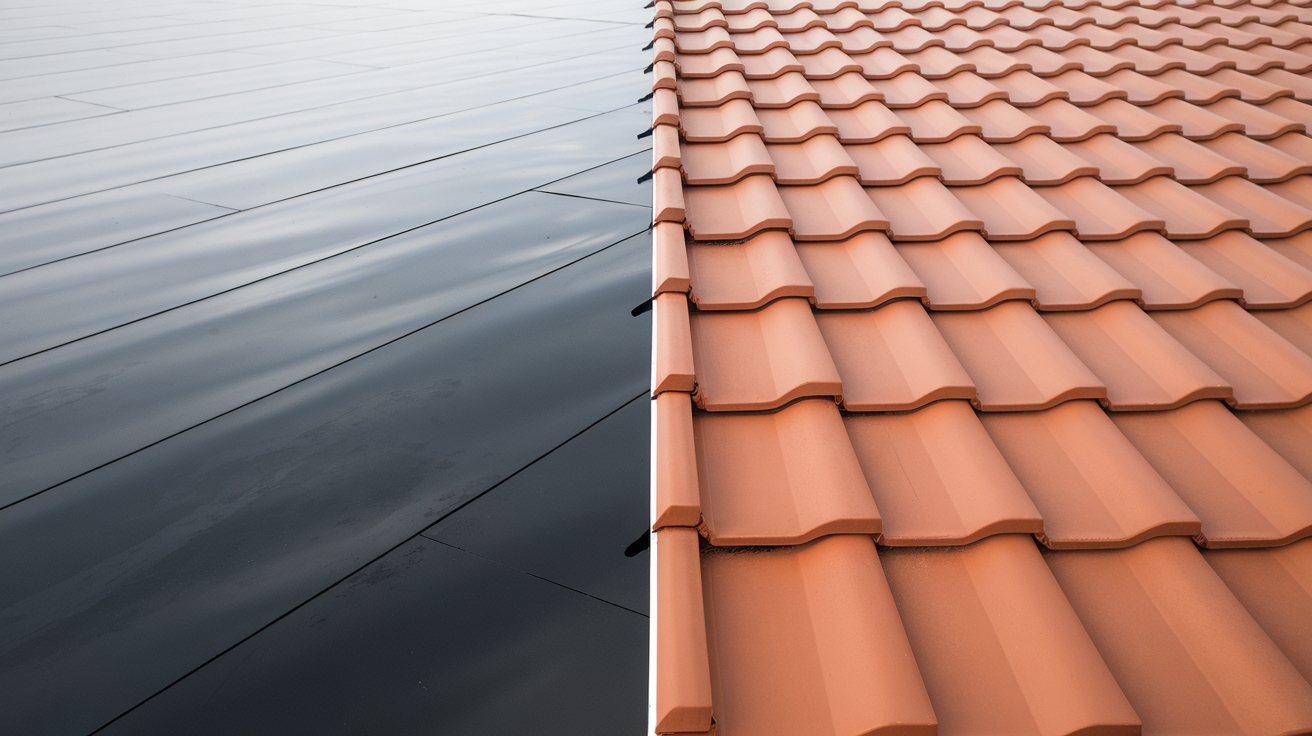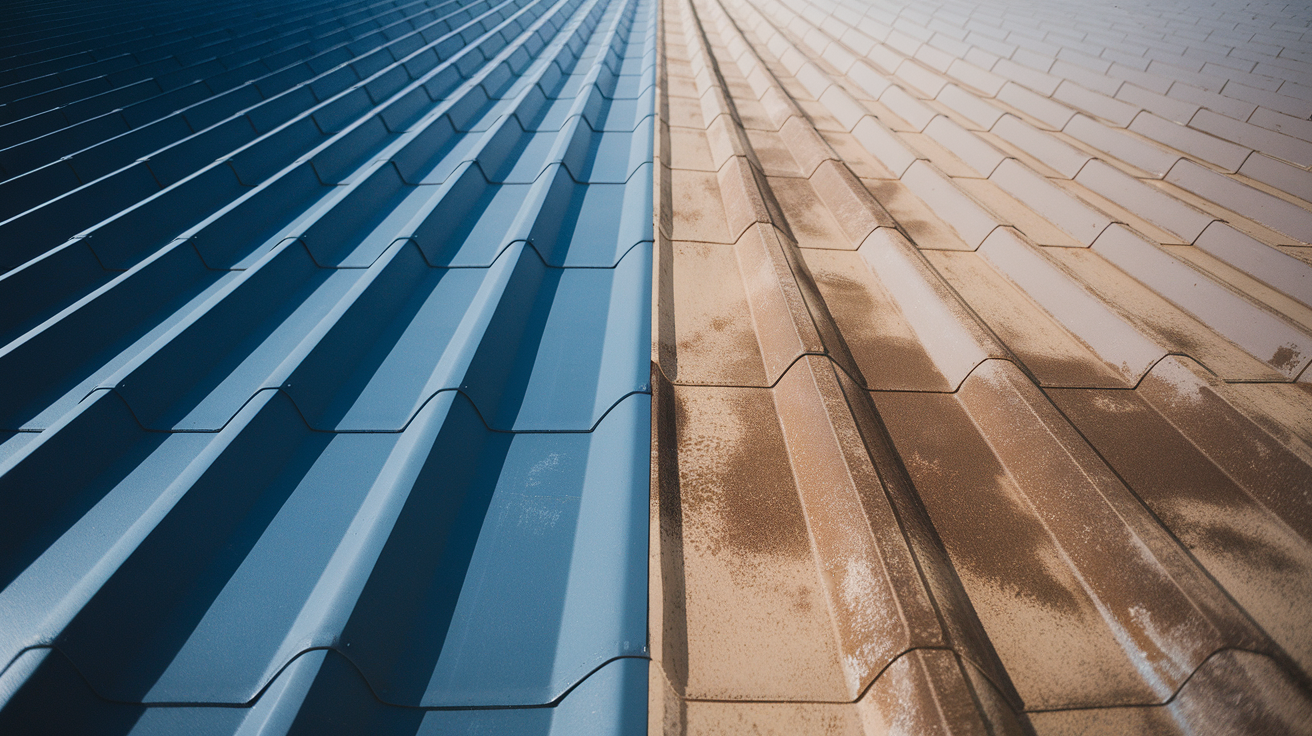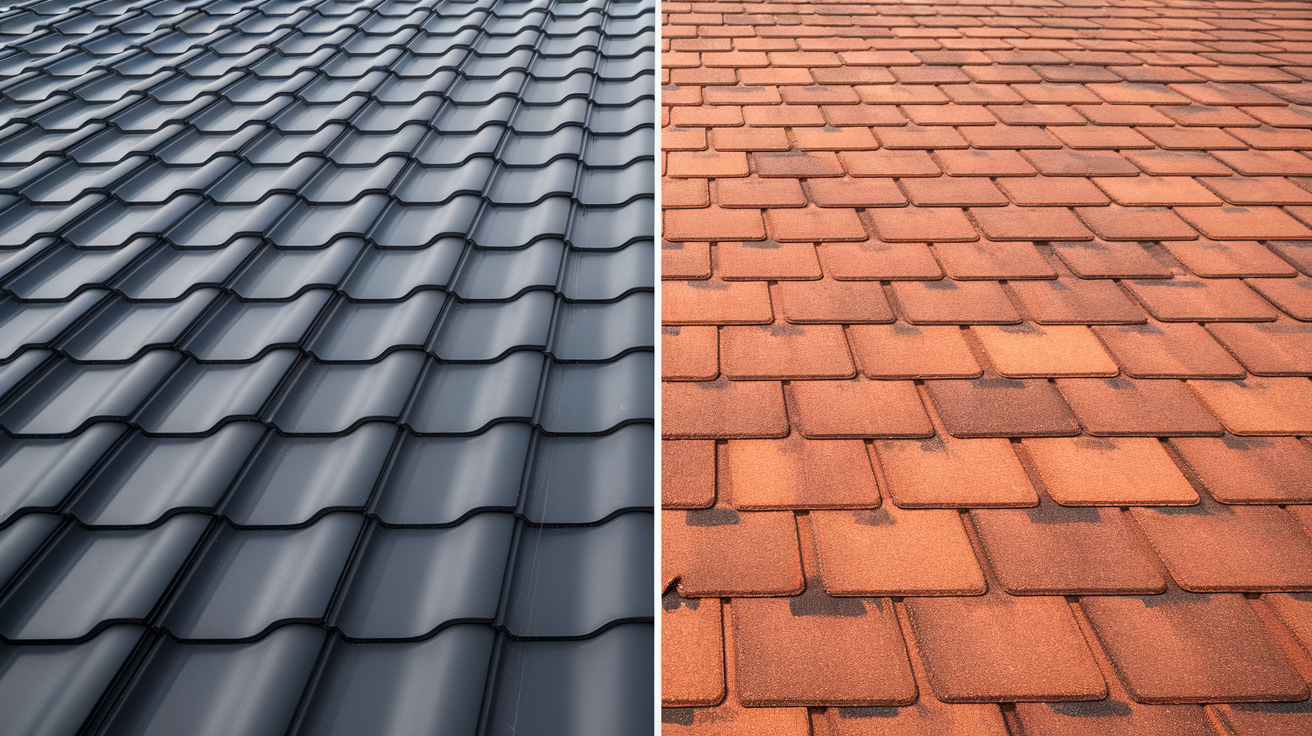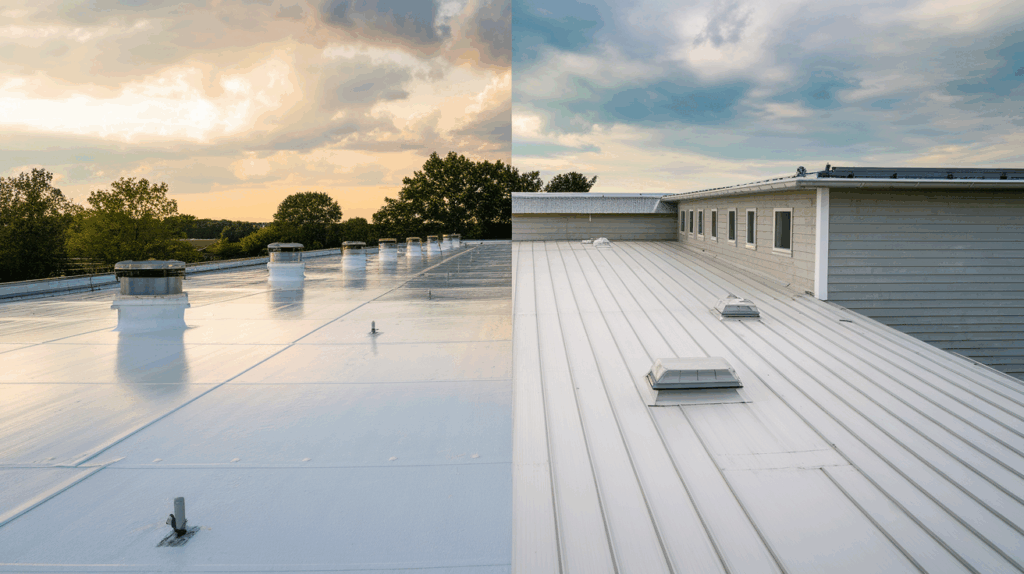When it comes to roofing materials for commercial buildings or flat roofs, two popular options are Thermoplastic Olefin (TPO) and Polyvinyl Chloride (PVC).
Both materials have earned their place in the roofing industry due to their durability, energy efficiency, and ease of maintenance.
However, understanding the key differences between them is essential when deciding which one works best for your building.
In this article, I’ll compare TPO and PVC roofing in detail, including their benefits, drawbacks, and other factors that will help you make an informed decision.
What are TPO and PVC Roofing?

TPO (Thermoplastic Olefin) and PVC (Polyvinyl Chloride) are both single-ply roofing materials used in commercial buildings.
What Is TPO Roofing?
TPO is a single-ply roofing membrane made from a blend of polypropylene and ethylene-propylene rubber.
It’s one of the most common roofing systems used in commercial applications due to its cost-effectiveness, ease of installation, and reflective properties.
TPO is available in various thicknesses and can be installed through a fully adhered, mechanically attached, or ballasted system.
TPO is typically white in color, which helps reflect UV rays and reduce cooling costs, making it an excellent option for hot climates.
It’s also resistant to damage from UV rays, ozone, and some chemicals, which makes it a relatively low-maintenance option.
What Is PVC Roofing?
PVC roofing is another type of single-ply membrane, but it’s made from polyvinyl chloride, which is a synthetic plastic polymer.
PVC roofing membranes have been around for decades, and they’ve proven to be highly durable and resistant to a variety of elements, including chemicals, oils, and fire.
Like TPO, PVC is also installed using similar methods, such as fully adhered, mechanically attached, or ballasted.
PVC membranes come in a variety of colors, but they are usually white or light grey to enhance their reflective properties.
This material is often chosen for buildings exposed to harsh conditions, like chemical processing facilities or those located in regions prone to extreme weather.
TPO vs. PVC: Key Differences
When it comes to TPO and PVC roofing, there are several key differences that can influence your choice:
| Feature | TPO Roofing | PVC Roofing |
|---|---|---|
| Cost | Typically more affordable | Higher initial cost |
| Durability | Moderate lifespan (15–25 years) | Longer lifespan (20–30 years) |
| Chemical Resistance | Moderate | Excellent |
| Fire Resistance | Good | Excellent |
| Flexibility | More flexible in cold temperatures | Less flexible in cold temperatures |
| Installation | Easier to install | Requires skilled labor |
These differences are important to consider when choosing the best roofing option for your building. Let’s take a closer look at the benefits and drawbacks of each material.
Pros and Cons of TPO Roofing

TPO roofing is cost-effective, energy-efficient, and easy to install, making it a popular choice for commercial buildings. However, it has a shorter lifespan and is more susceptible to seam failures over time compared to other materials.
Pros of TPO Roofing:
- Cost-Effective: One of the most significant advantages of TPO is its cost. TPO tends to be more affordable than PVC, making it an excellent option for budget-conscious projects. For many property owners, this makes TPO the go-to choice for roofing systems.
- Energy Efficiency: The reflective white surface of TPO helps keep buildings cooler by reflecting the sun’s UV rays. This can result in significant energy savings, especially in warmer climates where air conditioning costs can be high.
- UV Resistance: TPO is resistant to the harmful effects of UV rays, which helps prevent premature degradation and increases the roof’s longevity.
- Easy Installation: TPO roofing systems are relatively easy to install, which can help reduce labor costs. The material is lightweight, and many TPO systems can be mechanically attached, which speeds up the process.
Cons of TPO Roofing:
- Shorter Lifespan: Compared to PVC, TPO generally has a shorter lifespan. TPO roofs last around 15 to 25 years, depending on maintenance and environmental factors. In contrast, PVC roofs tend to last longer.
- Susceptible to Seam Failures: One of the most significant concerns with TPO roofing is its seam integrity. Over time, seams may begin to fail, which could lead to leaks and other issues. It’s crucial to ensure the seams are properly welded during installation.
- Variable Quality: TPO’s quality can vary significantly between manufacturers, which may lead to inconsistencies in performance. Some cheaper TPO products may not hold up as well over time.
Pros and Cons of PVC Roofing

PVC roofing is highly durable, resistant to chemicals and fire, and offers long-term performance with secure seams. On the downside, it has a higher initial cost and is less flexible in cold temperatures compared to TPO.
Pros of PVC Roofing:
- Durability: PVC is known for its impressive durability. It has a longer lifespan compared to TPO, with some PVC roofs lasting 20 to 30 years with proper maintenance. This makes PVC a great long-term investment for buildings that require a durable roofing solution.
- Chemical and Fire Resistance: One of the main advantages of PVC roofing is its excellent resistance to chemicals, oils, and other harsh substances. PVC is commonly used in buildings where chemical exposure is a concern, such as restaurants, factories, and warehouses. Additionally, PVC is highly fire-resistant, which is a significant benefit for fire-prone areas.
- Strong and Secure Seams: PVC roofs feature heat-welded seams, which provide a strong, secure bond. This makes them less prone to seam failure compared to TPO roofs.
- Energy Efficiency: Like TPO, PVC roofing is also highly reflective, which can help reduce cooling costs in commercial buildings. The white surface reflects UV rays, keeping the interior of the building cooler.
Cons of PVC Roofing:
- Higher Initial Cost: The primary downside of PVC is its higher initial cost. PVC roofing is more expensive than TPO, both in terms of material costs and installation. However, the longer lifespan of PVC can make it a more cost-effective option over the long term.
- Less Flexibility in Cold Temperatures: While PVC is highly durable, it’s not as flexible as TPO in cold weather. In freezing temperatures, PVC can become brittle, which makes it more prone to cracking or damage during installation.
- Environmental Concerns: PVC contains chlorine, and the manufacturing process can result in harmful emissions. Some property owners may prefer a more environmentally friendly roofing material, which is why TPO might be the better option in such cases.
Key Factors to Consider When Choosing Between TPO and PVC Roofing
When selecting between TPO and PVC roofing systems, several factors should be taken into account, including climate, cost, and installation requirements.
1. Climate Considerations
When choosing between TPO and PVC, it’s essential to consider the climate in which the building is located.
- TPO: TPO performs well in hot climates due to its reflective properties. If you’re in an area where summers are intense, TPO can help keep your building cool, thus reducing cooling costs.
- PVC: PVC is better suited for areas with extreme weather and exposure to chemicals. It offers superior performance in locations prone to heavy rain, high winds, and even areas with severe winters.
2. Cost Comparison
Cost is often one of the most significant factors when choosing between TPO and PVC roofing.
- Initial Installation Cost: TPO roofing typically costs between $7 and $11 per square foot, making it a more affordable option upfront compared to PVC roofing, which ranges from $8 to $14 per square foot.
- Long-Term Investment: Although TPO is cheaper to install, it has a shorter lifespan than PVC. PVC’s longer durability, especially in harsh conditions, makes it a better investment in the long run.
3. Installation and Maintenance
- TPO Installation: TPO is easy to install, reducing labor costs, and is ideal for quick roof installations. However, proper seam welding is crucial to prevent water infiltration.
- PVC Installation: PVC requires skilled labor, increasing costs. Its heat-welded seams provide more security but demand precise installation. Regular maintenance and checks are necessary for long-term durability.
Which Roofing Material Is Right for You?
Choosing between TPO and PVC roofing depends on your specific needs and budget.
If you’re looking for an affordable option that will last 15 to 25 years, TPO may be the right choice for you.
It’s an excellent option for general commercial buildings, especially those located in warmer climates.
On the other hand, if your building is exposed to harsh chemicals or extreme weather conditions, PVC might be a better choice.
While it has a higher upfront cost, the durability, chemical resistance, and fire safety make it an ideal long-term investment for properties that require extra protection.
Conclusion
Both TPO and PVC roofing systems have their advantages and drawbacks.
TPO is a cost-effective, energy-efficient option for commercial buildings, while PVC offers superior durability and chemical resistance, making it ideal for buildings exposed to harsh conditions.
By considering the climate, budget, and specific needs of your building, you can choose the roofing material that best suits your requirements.
Always consult with a roofing professional to ensure you make the best choice for your property’s roofing system.

